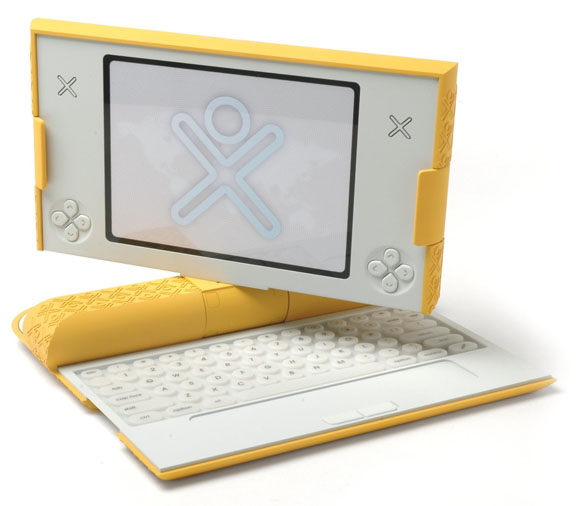The One Laptop Per Child initiative, aka “that $100 laptop” though it will initially cost more like $140, just got its first leg up. Nigeria has ordered one million of the custom Linux laptops. Now the big challenge will be whether the OLPC developers can deliver the machines on-budget and on time, given its wildly ambitious feature set. Interestingly, Intel and Microsoft, after publicly blasting the project as misguided, have each launched their own competing initiatives at significantly higher prices.

Nigeria Orders First Million OLPC Laptops at vnunet.com, which also has two videos of working prototypes; via worldchanging
For more background on the project, see The Laptop Crusade, from this month’s Wired.
See also our previous story, Creative, Networked Music Making on $100 One Laptop Per Child, which brought some interesting debate on all sides of this issue.
Beyond the idea of giving millions of children new access to computing, there’s a separate mission that’s come up: how to create useful music software for children. As covered in that previous article, a team of developers is working on new music software called TamTam that will have two lives: one, as creative musical software for the OLPC hardware, and a second, as open source software anyone can run. That means that even if you don’t agree with OLPC’s aims and implementation, TamTam could still have potential running on used laptops here in the US. (Given the problems of toxic computer waste, I’m just as interested in how we can recycle computers without short-shrifting children that receive them.)
Reader Nat Lécaudé, who initially brought TamTam to our attention, talks about working on the project:
I got involved through the University of Montreal where I am a student. Jean Piché, my teacher is the author of Cecilia, a sound manipulation program based around Csound. Since we have a lot of Csound knowledge and that the OLPC runs Csound as it’s audio engine, people from MIT asked Jean to form a team to do a music software for the OLPC.
Regarding different tunings, we’re still not sure how it will be done but it will definitely be there. We were thinking about defining a global tuning and that the notes would snap to the good spot on a grid. Lots of solutions for this, we’ll have to wait a little to see how it will be handled. Since in Gamelan for example, each instrument is slightly detuned to create a vibrato effect, we will need a mechanism to detune a specific track slightly. That would be I guess, the most complex scenario.
Ed.: There’s actually a lot to this point. Not all instruments in gamelan feature paired tunings; “solo” instruments like the rebab can be played alone; at the opposite extreme, while individual pairs are tuned together, gamelan builders generally think of the tuning of the whole ensemble, so just doing pairing out of context wouldn’t really work. That just covers Java and Bali; other countries have various issues of their own. Talking about tuning and computer music could easily fill a book. At the very least, I hope this software will support Scala microtunings, since it’s the only real standard for implementing this on computers. Even in the Western world, 12-TET tuning doesn’t cover the full range of what people actually play. Sorry to get off on this topic, but I imagined someone would bring this up if I didn’t. It does illustrate why the challenges of creating this software are fascinating in themselves. -PK
The goal is to have multiple levels of complexity. A kid can start making music very easily by clicking some buttons that will generate music based on algorithms. Eventually he can start sequencing himself note by note. He will also be able to write python scripts to generate music based on rules of his own. Same goes for synthesis, a sound bank based around samples will
be included but it will be possible for the kid to dig into csound to create his own sounds. The OLPC being quite modest regarding performance. We won’t be able to do things like physical modeling, but simple synthesis should be possible.The resulting software will be completely open source and the goal is to have 2 versions. A version targeted at the OLPC which will deal with the fact the machine is not powerful. Another version will be made available to other platforms so we can play with it ourselves. Even though the concept is simple, we “wasted” lots of hours with the max demo generating music and, it can be used as a composition tool or just for the fun of it. The coolest feature we did is the ability to record short samples and load the samples
as instruments. It will be interesting to see also if the community can come up with custom algorithms generated using our scripting interface. These could eventually be added to the OLPC version. It would be fairly easy for instance to write an algorithm that would generate different Gamelan music each time you run it.Thanks for posting the story and I will keep you updated as it evolves!